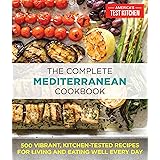The culinary world often debates the merits of complex, multi-layered dishes versus the profound elegance of simplicity. As humorously highlighted in the video above, Pasta Aglio e Olio often sparks such fervent discussions, yet its status as a foundational Italian classic remains undisputed. This seemingly minimalist dish, translating literally to “garlic and oil pasta,” embodies the true spirit of Italian home cooking: leveraging a few high-quality ingredients to create an explosion of flavor.
Far from being merely a humble weeknight meal, a perfectly executed Pasta Aglio e Olio is a testament to precision and understanding of core culinary principles. It showcases how simple components, when treated with respect and skill, can transcend their individual identities to form a harmonious, unforgettable experience. This guide delves into the essence of this beloved dish, demystifying its creation and revealing the subtle nuances that elevate it from a basic meal to a gastronomic triumph.
Unpacking the Allure of Authentic Pasta Aglio e Olio
Pasta Aglio e Olio stands as a cornerstone in the pantheon of Italian cuisine, revered for its straightforward nature and profound depth of flavor. Its charm lies not in extravagant components but in the masterful interaction of a select few, each playing a critical role. When prepared correctly, this dish delivers a comforting warmth, a subtle kick from chili, and the aromatic embrace of garlic infused into rich olive oil.
Understanding the appeal of this garlic and oil pasta involves recognizing its historical roots in cucina povera—the “poor kitchen” tradition of Italy. This tradition emphasizes resourcefulness, utilizing readily available ingredients to create incredibly satisfying meals. Thus, Aglio e Olio emerged as a staple, offering a delicious and economical solution for hungry families, a practice that continues to resonate with home cooks globally.
The Essential Ingredients: Pillars of Perfection
Achieving an exceptional Pasta Aglio e Olio relies entirely on the quality and preparation of its core constituents. Like a painter with a limited palette, the chef must select each component with care, ensuring its vibrancy. Four primary ingredients form the bedrock of this iconic Italian pasta dish.
Extra Virgin Olive Oil: The Golden Foundation
The choice of olive oil is paramount, acting as the soul of the dish. A high-quality extra virgin olive oil imparts fruity, peppery notes and a silken texture that cheap alternatives simply cannot replicate. Think of it as the canvas upon which all other flavors are painted; its robustness and purity are non-negotiable for an authentic taste profile.
Garlic: The Aromatic Heartbeat
Garlic is not just an ingredient; it is the central character in Pasta Aglio e Olio. Its preparation dictates much of the dish’s final character. Thinly sliced garlic allows for even cooking and optimal flavor release, infusing the oil without overwhelming it. The goal is a golden, fragrant garlic, not a burnt, bitter one, which can instantly ruin the entire preparation.
Spaghetti or Linguine: The Vessel of Flavor
While various pasta shapes can be used, long strands like spaghetti or linguine are traditionally preferred. Their surface area and shape are ideal for clinging to the luscious garlic-infused oil and any emulsified sauce. Cooking the pasta to a perfect al dente is crucial, ensuring a slight bite that provides textural contrast to the smooth sauce.
Chili Flakes and Fresh Parsley: The Finishing Touches
A touch of red pepper flakes introduces a gentle warmth and complexity, awakening the palate without overpowering the delicate garlic and oil flavors. Fresh parsley, stirred in at the very end, offers a burst of freshness and color, acting like a bright garnish that lifts the entire dish. These elements are the final brushstrokes, completing the culinary masterpiece.
Crafting Culinary Magic: The Preparation Process
Preparing Pasta Aglio e Olio is less about following a rigid recipe and more about understanding a sequence of interactions. It is a dance between heat, oil, garlic, and starch, culminating in a harmonious emulsification. The process demands attention and a gentle hand, allowing each ingredient to contribute its best.
Begin by heating the extra virgin olive oil gently in a large skillet or pan over medium-low heat. This deliberate, slow approach allows the oil to warm evenly, preparing it to absorb the garlic’s essence. Rushing this stage often leads to scorched garlic and an acrid flavor profile.
Next, add the thinly sliced garlic to the warming oil, along with the red pepper flakes if you desire a kick. Cook the garlic slowly, allowing it to turn a delicate golden brown. This is perhaps the most critical stage; the garlic must become fragrant and soft without burning. Burnt garlic imparts a harsh bitterness that cannot be undone.
Simultaneously, boil your chosen pasta in generously salted water until it is al dente. Before draining, reserve at least a cup of the starchy pasta water. This liquid is the secret ingredient for creating the rich, emulsified sauce that defines a truly great Aglio e Olio.
Transfer the al dente pasta directly into the skillet with the garlic and oil. Add a splash of the reserved pasta water. Begin to toss the pasta vigorously, allowing the starch from the pasta water to combine with the olive oil. This action creates a creamy, cohesive sauce that coats every strand. Continue adding pasta water a little at a time until the sauce reaches a luxurious consistency.
Finally, remove the skillet from the heat, stir in a generous amount of fresh chopped parsley, and toss one last time. Serve immediately, perhaps with a final drizzle of high-quality olive oil and a sprinkle of Parmesan or Pecorino Romano, though purists often omit cheese to let the garlic and oil truly shine.
Beyond the Basics: Common Pitfalls and Expert Tips
While deceptively simple, Pasta Aglio e Olio presents several opportunities for missteps. Avoiding these common errors ensures a result that celebrates the ingredients rather than diminishes them. Mastery of this dish comes from understanding these subtleties.
One prevalent mistake is overheating the oil or rushing the garlic. As a result, the garlic turns dark brown or black, releasing a distinctly bitter flavor that permeates the entire dish. Instead, employ a gentle, patient approach, keeping the heat low and consistently monitoring the garlic’s transformation.
Another frequent oversight involves neglecting the power of pasta water. This starchy liquid is indispensable for emulsifying the oil and creating a cohesive, velvety sauce that clings to the pasta. Without it, the dish often results in oily pasta with separate, unintegrated components, resembling a dressing rather than a sauce.
For an elevated experience, consider lightly toasting some breadcrumbs in a separate pan with a touch of olive oil until golden and crisp. These “poor man’s Parmesan” provide a delightful textural contrast and a subtle savoriness when sprinkled over the finished garlic and oil pasta. Furthermore, experimenting with different varieties of chili, such as Calabrian chilis, can introduce exciting new dimensions to the dish.
Finally, remember that the quality of your olive oil significantly impacts the outcome. Investing in a good extra virgin olive oil means the difference between a decent meal and an extraordinary one. The flavor profile of a robust, aromatic olive oil will underpin every bite of your Pasta Aglio e Olio, making it truly sing.











